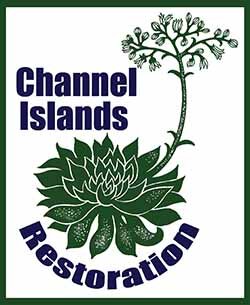Tamarisk (Tamarix ramosissima) is one of the most detrimental and troublesome invasive plants of the Southwestern United States. These large, deciduous shrubs were brought from the Middle East to the United States as ornamental plants, prized for their showy plumes of pink flowers, and then later used as windbreaks and hedges. Their hardiness, drought tolerance, and ability to grow in poor soils makes them a popular, low-maintenance shrub to cultivate. Unfortunately, their resilience is exactly what makes it such a troublesome invasive plant. Once established, tamarisk can spread quickly and dominate entire riparian (streamside) ecosystems with devastating consequences for plant and animal life alike.
Once established, tamarisk severely affects native plants in a number of ways. Tamarisk is also called salt cedar because it is able to pull salts from the soil and excrete them through their leaves. Native birds and grazing animals may avoid stands of tamarisk for this reason. When these leaves drop, they create a thick, salty mat that negatively affects soil and water quality, and impedes new native plant growth. This means new trees like cottonwoods or sycamores cannot sprout, therefore reducing available nesting habitat for birds, roosting areas for raptors, and opportunities for other animal species.
Additionally, a single tamarisk tree can drop as many as 50,000 seedlings in a season, flooding a streambed with seedlings that can potentially grow to choke out streams. Tamarisk also is able to sprout from their deep root systems, meaning a single tree can grow into a dense thicket that pushes out any other plant life and individuals can quickly recover from being cut down. Thickets can sometimes grow so thick that larger animals like deer, bears, and mountain lions cannot move through them.
Tamarisk also affects streams and rivers themselves. By creating thick walls on either side of a stream or river, the plants channelize the river, reducing the number of eddies and pools available for fish and amphibian spawning. By crowding out taller native plants, they expose rivers to more sunlight, warming the water and reducing its oxygen content, which can be devastating for aquatic life.
Once tamarisk is established in an ecosystem, it’s near impossible to eradicate, but here in the Los Padres National Forest we have a chance to do it.

